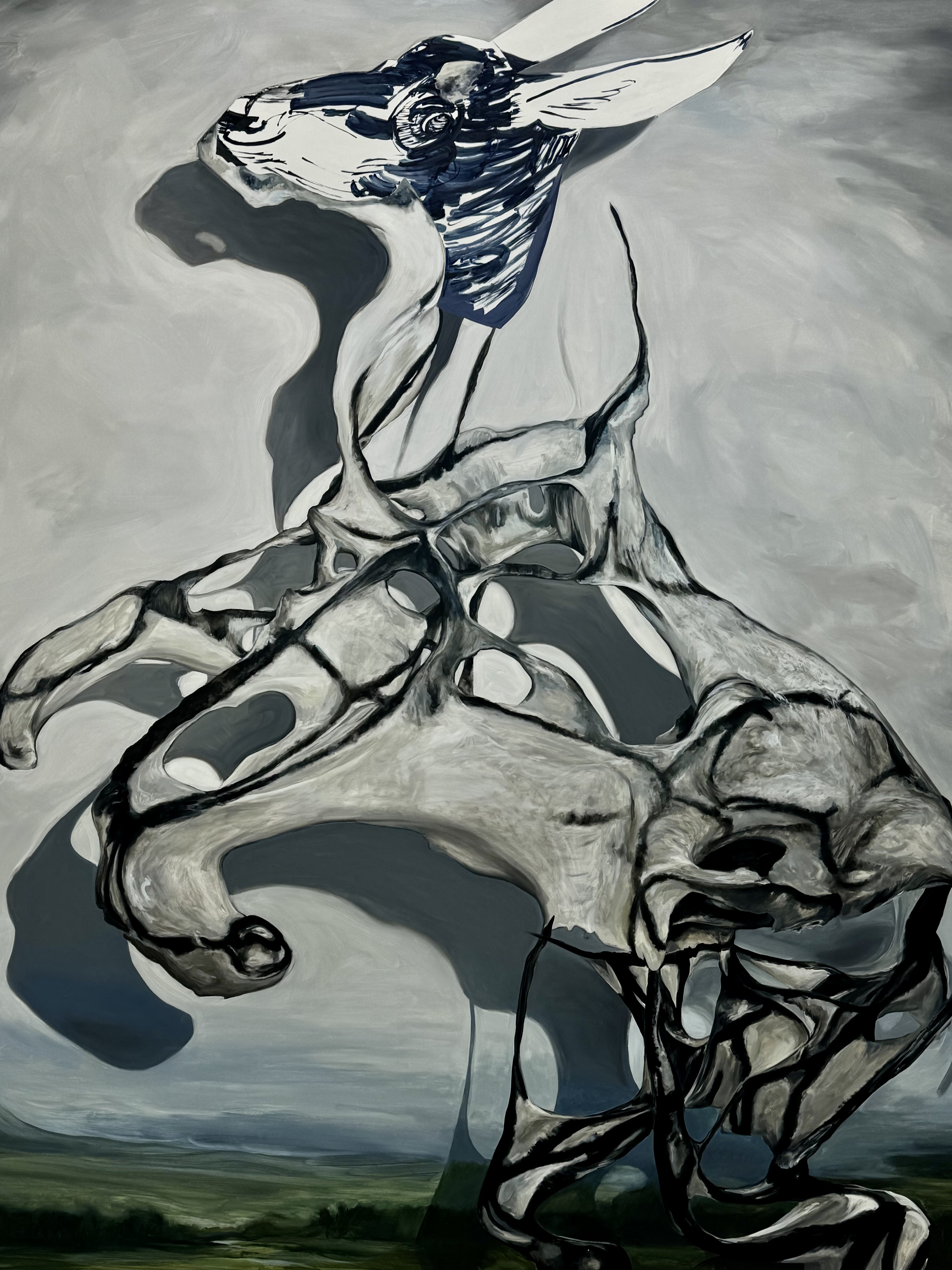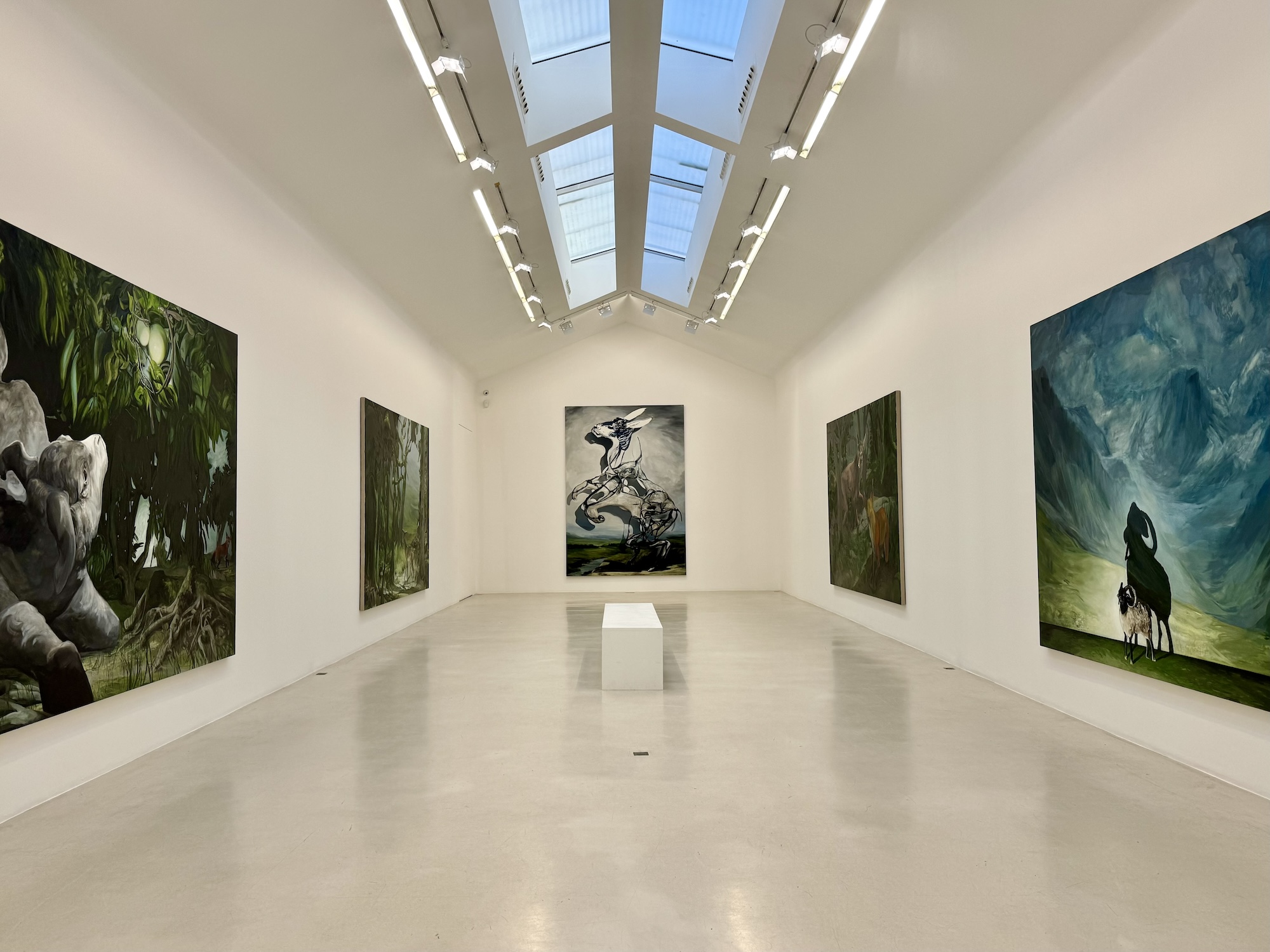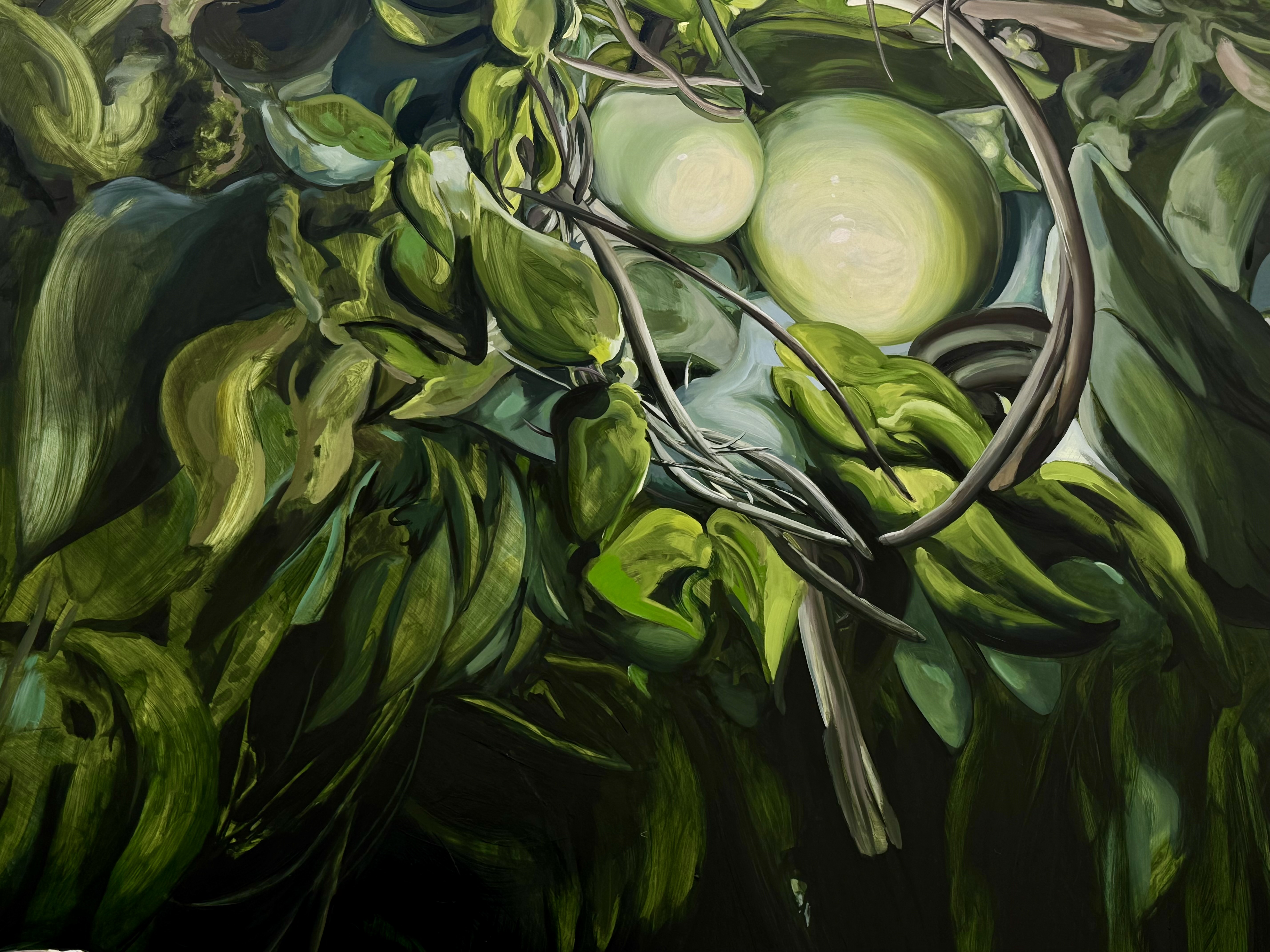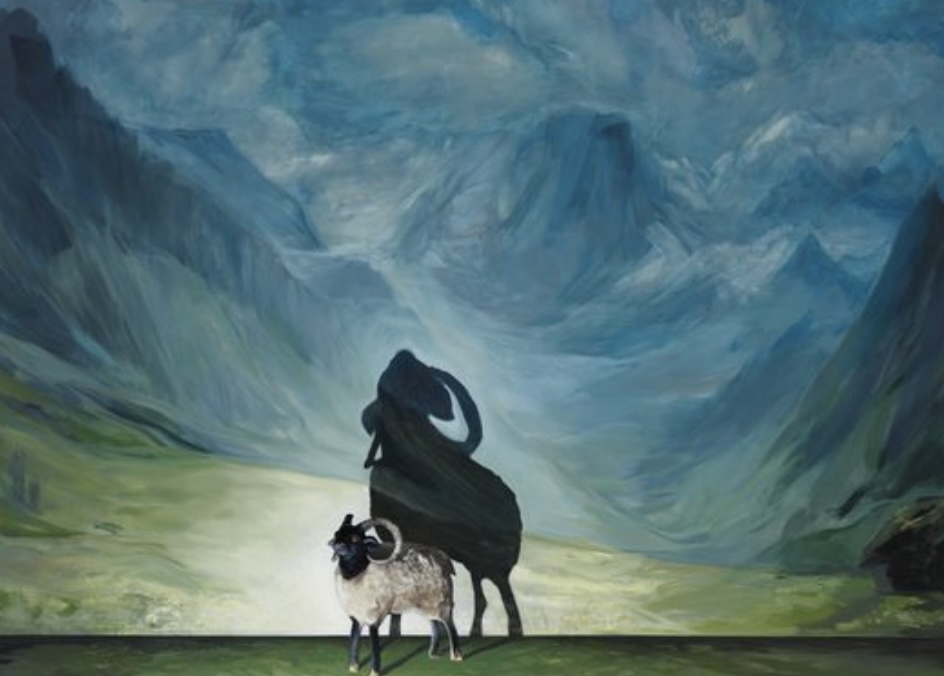The Engine of Beasts
The Engine of Beasts, on view until November 16th at Perrotin Paris’ Impasse Saint-Claude location, foregrounds British-American multidisciplinary artist Emma Webster. As highlighted by Perrotin’s press release, the etymon of engine, ingenium, has historically been used to mean adaptation, evolution, and an alchemical transformation of something from one form to another. Adaptable is certainly an appropriate descriptor for Webster’s output, as the works selected for The Engine of Beasts, which evidence her technical prowess in myriad mediums, range from gargantuan oil paintings to sculpted miniatures. The exhibition is far from scattered, though, as the ensemble of works are bound by distinctive commonalities. For one, Webster takes great interest in the storied tradition of Western animal painting, though her singular approach, by which creatures are defamiliarized and abstracted, both harkens back to and subverts this precedent.



The subjects of Webster’s paintings and sculptures are predominantly animals, depicted either by their lonesome or in pairs. (The artist has a particular affinity for foxes, sheep, and bugs, and each calls to mind a certain moral valence.) At first glance, Webster’s renderings of folkloric animals and the cool-toned landscapes in which they’re situated might seem quite ordinary. But a closer look reveals the bizarre, uncanny quality which lies just beneath each work’s surface; The Address, as shown here on the Perrotin site, presents a ram standing on a stage made to look like a landscape. Thus there’s a disconnect between the animal and its surroundings– this artificial world, a “fictive nature,” evokes but does not faithfully resemble reality. Like the veristic surrealists, Dalì and Magritte amongst them, Webster uses the language of realism as an agent in the convincing construction of the surreal. Her beasts, predators and prey alike, are presented as isolated and sometimes deformed beings– perhaps a commentary on the future of the natural world in light of technological development. The exhibition’s very name, The Engine of Beasts, is reflective of Webster’s interest in conjoining dissimilar entities and in placing the natural and the artificial in dialogue with one another. The exhibition’s curators have riffed on this juxtaposition: two-dimensional and three-dimensional works are situated side by side, and the works’ painted and sculpted subjects appear to observe one another warily.
The Engine of Beasts probes the tension between the artificial and the organic, as in the digital age, the boundary that separates the two becomes increasingly porous by the day. Webster is skilled at rendering familiar, fabled motifs just the faintest bit disturbing; she denies viewers simple pleasure, instead insisting that we linger in a murkier territory.




